Alberta
Alberta’s Methane Target Reached Early
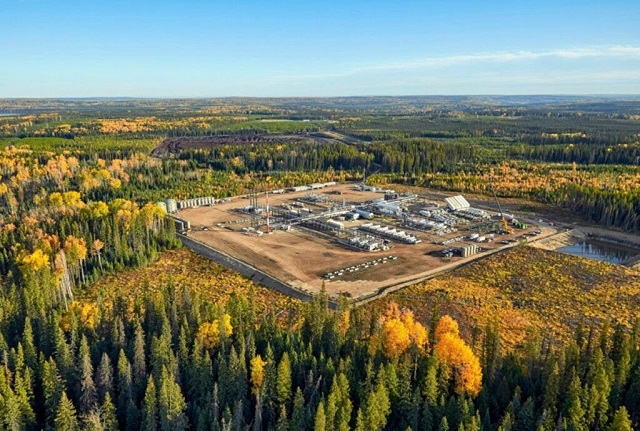
Gas processing plant in northwest Alberta, courtesy of EnergyNow
From EnergyNow.ca
Courtesy of ENERGYminute
See more articles and infographics from ENERGYminute HERE
In a pat-yourself-on-the-back moment, Alberta’s oil and gas industry successfully achieved a 45 percent reduction in methane emissions, surpassing the province’s mandated target ahead of schedule.
Background: Alberta was the first province in Canada to commit to a 45 percent reduction in methane emissions from the oil and gas sector by 2025, based on 2014 levels. Spoiler alert: Alberta achieved its methane mission three years early.
- Their targeted approach to reducing methane emissions from flaring, venting and fugitives has become an example globally, earning national and international awards for its effectiveness and cost-efficiency.
Alberta strong: The government credited the early success to close collaboration with the industry, implementing early action programs such as carbon offsets, tough regulations for all facilities, and enhanced leak detection and repair methods.
Minister of Environment Rebecca Schulz highlighted that this made-in-Alberta approach not only achieved the goal three years ahead of schedule but also resulted in roughly $600 million in savings for the industry compared to the proposed federal program.
Getting the job done: Alberta allocated $57 million from the Technology Innovation and Emissions Reduction fund for methane emissions programs, including:
- $25 million in rebates to companies adopting emissions reduction equipment.
- $17 million supporting alternatives to detecting and quantifying emissions.
- $15 million to help small- and medium-sized operators assess methane reduction opportunities.
Overall, the initiatives eliminated 16.6 million tonnes of carbon dioxide equivalent from the atmosphere.
Looking ahead: Alberta is committed to building on this momentum and collaborating with industry experts to determine the next steps in their emissions reduction journey, aligning with the goal of carbon neutrality by 2050.
Alberta
Alberta deserves a police force that actually reflects its values

This article supplied by Troy Media.
The RCMP answers to Ottawa, not Albertans. A provincial police force is the only solution
The recent comments from RCMP Staff Sergeant Camille Habel, who decried traditional values as a path to extremism, should be fuel for every Albertan committed to building a provincial police force that truly reflects our values, not Ottawa’s vision of what we should become.
Habel’s statement, framing beliefs rooted in community and local culture as potentially dangerous, highlights a growing disconnect between
the RCMP and the values that Albertans hold dear. This underscores the urgent need for a police force that is accountable to our province and its distinct way of life.
Alberta has witnessed troubling patterns of RCMP overreach—from door-kicking in Fort McMurray to aggressive tactics during the 2013 floods in High River to politically charged allegations against the Coutts Four. These aren’t isolated incidents but symptoms of an institution that has become increasingly disconnected from Alberta’s unique needs. The RCMP, which answers to Ottawa rather than the provincial government, has strayed from the values it was once founded to protect.
The RCMP wasn’t always like this. Originally a force with deep Western roots, it was created to maintain peace in a vast and rugged frontier. Today, however, the RCMP is centralist, politicized, and increasingly at odds with the values it once upheld.
This is why creating an Alberta Provincial Police (APP) isn’t just symbolic. It’s a constitutional right under Section 92 of the Constitution Act,
1867, already exercised by Quebec and Ontario. Alberta can—and should—do the same. A provincial police force would be accountable to the province, reflect local values, and serve Albertans’ unique needs rather than those of Ottawa.
But we must be clear: geography alone won’t solve the problem. If the new force carries the same institutional DNA as the RCMP, it will still lack the local understanding and trust that Albertans deserve.
The case of Jeremia and Dominic Leussink five years ago shows what’s at stake. The brothers, farmers near Didsbury, were going about their business when 18-year-old Jeremia, after a 16-hour shift, drove a tractor through a ditch into a police checkstop—normal in rural practice. The Alberta Sheriffs didn’t show restraint. They dragged him from the tractor, slammed him to the ground, and punched him in the neck and face. Dominic, who arrived later, was arrested trying to protect the equipment. The charges were eventually dropped but not before severe damage was done.
Alberta is not a generic province. Our motto, “strong and free,” is more than branding. We value private property as the cornerstone of liberty, and we cherish freedoms—of speech, worship, association, and dissent. These values are essential to life in this province, not ornamental. In contrast, the Canadian Charter of Rights and Freedoms omits property rights, reflecting a more centralized, Laurentian worldview. This ideological divide between Alberta and the federal government underscores the need for a police force that aligns with our values.
Habel’s remarks, labelling “traditional values” as a path to extremism, are not fringe—they reflect the growing establishment perspective. This shift directly impacts policing in Alberta, creating an urgent need for reform.
To chart a different course, Alberta’s police force must be trained differently. It must instill core virtues at the ground level.
First, Alberta’s police force must consist of officers who not only patrol the land but belong to it. Second, training must focus on independent judgment, not rote compliance. Third, the force must pursue real crime, not ideological ghosts. Fourth, it must be accountable to Albertans, not bureaucratic fads or external frameworks. Finally, it must protect Alberta’s culture: our commitment to freedom, property rights, and a government that serves, rather than rules, its citizens.
Alberta cannot afford to send officers to federal academies that instill a diluted worldview. A curriculum rooted in Alberta’s culture and history is essential. It will form the foundation of a legitimate provincial force. The Ministry of Public Safety must prioritize establishing the right institutional DNA.
We aren’t alone in facing these challenges. The Texas Rangers, though not perfect, offer a valuable comparison. Historically, they were embedded in the culture they served, answering to Texans, not federal fashions. Their authority came from the land upward, not from bureaucratic command downward.
Their ethos, captured in the saying “One riot, one Ranger,” was about competence, courage, and direct accountability—not swagger. They didn’t just enforce the law; they protected a way of life because they were part of it.
That’s the institutional culture Alberta must create: one where policing defends community, liberty, and order—not a tool of political engineering designed elsewhere. We need a police force that serves Alberta first, not a bureaucracy in a new uniform.
If done right, the Alberta Provincial Police will serve as a shield against federal overreach, cultural drift, and the creeping conformism of federal institutions. If done poorly, it will be the modern RCMP in a fresh uniform—still top-down, still alien, still suspect.
Alberta cannot afford to get this wrong. This is our moment to define a police force that works for us—rooted in our values and accountable to our people. Anything less would be a missed opportunity.
Marco Navarro-Genie is vice-president of research at the Frontier Centre for Public Policy and co-author, with Barry Cooper, of Canada’s COVID: The Story of a Pandemic Moral Panic (2023).
Troy Media empowers Canadian community news outlets by providing independent, insightful analysis and commentary. Our mission is to support local media in helping Canadians stay informed and engaged by delivering reliable content that strengthens community connections and deepens understanding across the country
Alberta
Province urging post secondary students to apply for loans, grants, scholarships, bursaries and awards

Alberta’s government is helping build the province’s future workforce through funding to support post-secondary students.
Alberta’s government is investing almost $1.2 billion in post-secondary students through loans, grants, scholarships, bursaries and awards. Post-secondary students are essential to building Alberta’s future workforce and ensuring the province remains competitive both nationally and internationally.
As of Sept. 2, Alberta Student Aid has received more than 90,000 loan and grant applications for the 2025-26 academic year, and about 17,000 scholarship and award applications. The Alberta Student Aid system automatically processes student aid applications, though some applications require staff review to determine eligibility.
“Alberta’s post-secondary students are investing their time, energy and money in pursuing higher education. Our future leaders are among these young Albertans, and we are proud to support them through a variety of repayable and non-repayable funding supports. An investment in these students is an investment in the future of our workforce, our economy and our province.”
The Alberta Student Awards Personnel Association consists of 85 members representing 25 of Alberta’s post-secondary institutions, and works with Alberta’s government to make improvements to the student financial assistance program in Alberta.
“The Alberta Student Awards Personnel Association sincerely appreciates the noticeable improvements in application processing times this year. The positive impact of the work at Alberta Student Aid is being felt by students and institutions alike, and we recognize the considerable effort and coordination required to achieve this level of service.”
Alberta’s government is continuing to take action to make post-secondary education more affordable by capping tuition increases, reducing interest rates on student loans, maintaining the interest-free grace period, increasing access to the Repayment Assistance Plan and modernizing shelter allowances for student aid.
Quick facts
- Students can get more information and submit their applications at studentaid.alberta.ca.
- To avoid delays, students are encouraged to upload all required documentation with their initial application.
- Alberta Student Aid does not cover all financial costs associated with attending post-secondary education and is a supplement to other funding sources such as savings, part-time employment or family assistance.
Related information
-
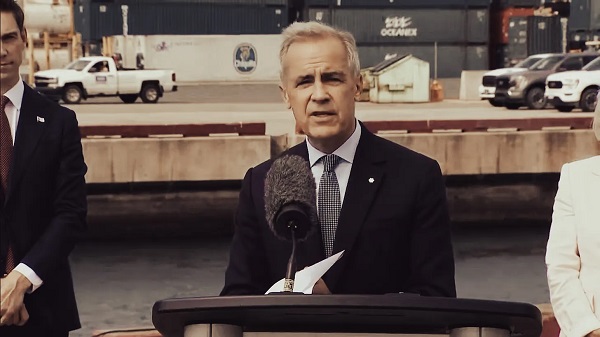
 Business2 days ago
Business2 days agoMark Carney’s Climate Competitiveness Pitch Falls Flat
-

 Business2 days ago
Business2 days agoCanada Post is broken beyond repair
-
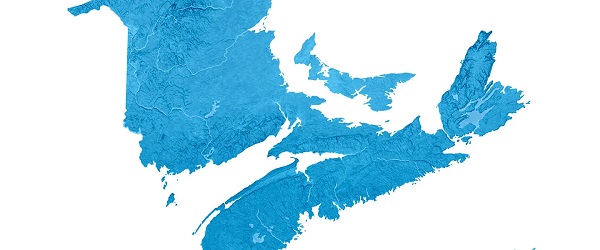
 Alberta2 days ago
Alberta2 days agoMaritime provinces can enact policies to reduce reliance on Alberta… ehem.. Ottawa
-

 Business2 days ago
Business2 days agoCanada can’t allow so many people to say ‘no’ to energy projects
-
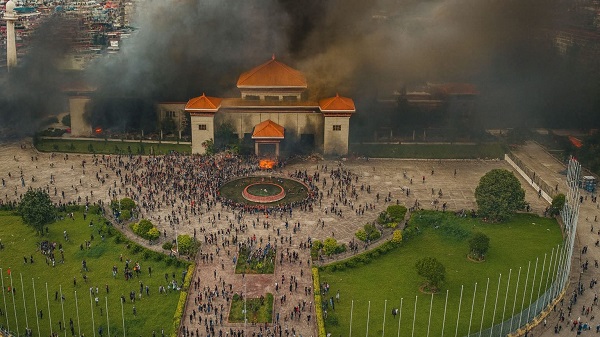
 International1 day ago
International1 day agoNepal Tried To Censor The Internet. Young People Set Parliament on Fire.
-
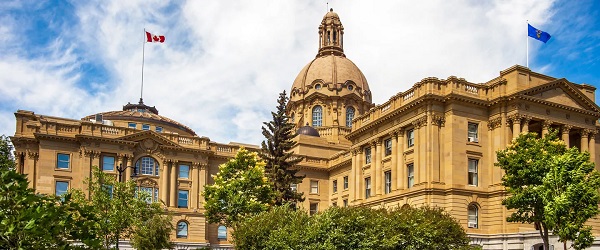
 Alberta1 day ago
Alberta1 day agoYes Alberta has a spending problem. But it has solutions too
-

 Crime1 day ago
Crime1 day agoCharlotte train killer hit with federal murder charge, faces max penalty
-

 Business1 day ago
Business1 day agoHealth-care costs for typical Canadian family will reach over $19,000 this year









